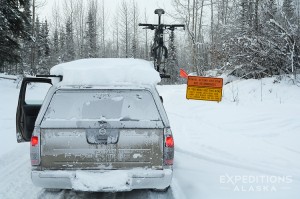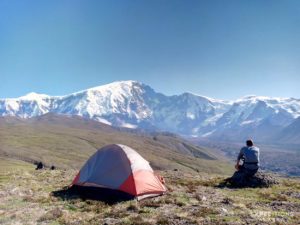
Hey Folks
This year (2013) seems to definitely be the year that photographers want to head north to photograph the northern lights here in Alaska; the number of websites that have suddenly added an “Alaska Northern Lights Photo Tour” to their schedule seems to have tripled in about 6 months.
That, and considering the number of photographers heading up here on their own, or with friends, to photograph the Aurora borealis this winter/spring means we’ll very likely see dozens, if not hundreds, of really, really amazing northern lights photographs from this coming season. I know I’m sure looking forward to seeing all the great images.
Given this influx of folks from “down south”, I thought a good subject to write about, one that I hope many people will find useful, might be winter driving and winter travel in Alaska. Coming, as I did when I moved here, from a background of very little real “winter conditions”, I had a lot to learn when I arrived, and some of that might be helpful for others headed this way. Not just about the physical driving on snow and ice. What to bring with me. What hazards I’m likely to encounter. And on and on.
Remember, you’ll likely be driving in a place you don’t know, at night, with snow berms 3-4′ high on either side of the road. You can’t just stop and pull over because the aurora suddenly comes out. You can’t just simply turn around and head back to that rest stop pull out you saw a mile back, because the road has no shoulder. Because the driver coming over the hill can’t suddenly stop on the icy road when he sees you doing a 17 point turn on his highway. And though it may like there’s nobody else on the road all night long, the minute you want to pull over and shoot, or turn around in the middle of the road, someone comes putting down the highway. Trust me.
All this being the case, it means you (yes, you) are very likely to have a few hassles. Very likely. I know, I know – I don’t care how “safe” you are, and how awesome you’re driving is. Things are different at night. In the winter. In Alaska. When you’re trying to find a place to pull over and photograph from.
Aurora borealis photographers, here are a few items I highly recommend you consider adding to your travel vehicle for driving around in Alaska during the winter. Especially for driving at night and trying to photograph.
Firstly, obviously all the usual stuff like spare tires, a jack, etc. Battery charged, oil changed, etc, etc. If you’re renting a vehicle, they should cover that stuff. But do check with them. Stuff like First Aid kits (and knowledge of how to use them) and a fire extinguisher are a given, of course.
A tow strap, or tow rope.
A tow strap is definitely the better choice, but a rope is a good 2nd choice if you don’t have a strap. No, I don’t think you’re going to crash into the forest at 100 miles an hour and need a tow. No, you probably don’t need to carry a winch with you. Yes, I do think it’s you’ll try to a 3-point turn on some little Alaska road and dip your front, rear or both sets of wheels into the snow. And then you’re stuck. You’re not hurt, nothing’s damaged, everything’s OK. It’s no big deal. Except, you’re stuck. And going nowhere.
It doesn’t take a whole lot of snow to get you stuck. Just enough that you can’t get yourself out; even with 4 Wheel Drive or All-Wheel Drive vehicles. It’s all too easy to get stuck. Trust me.
I’ve been stuck more than once, even though I’m a pretty cautious driver here in the winter. And almost every time, all I needed was a “little pull”, maybe 2 feet or so, and I was good to go; “Just a yard or so, and I’ll be fine”. But without a tow strap or rope, I’d have been going nowhere. Your trip will be a whole lot more fun (and productive) if, as the aurora starts to light up, you’re mobile and able to get where you want to go, rather than sitting in a ditch watching the display through your now fogged up windshield. Trust me.
Road Safety Flares
I keep a small pack of flares handy in my vehicle in wintertime. If I do break down on the road (I was going to say “side of the road”, but there’s virtually NO “side of the road” in Alaska in the winter), I don’t want the next driver (the one carrying my much needed tow strap) to come around the corner and run into me. And I know that driving in Alaska, at night, makes stopping more difficult than many people expect. So warn them well. Flares are a useful way to signal to drivers that (a) you’re in their way, and (b) you might need some help. Even something like this battery powered flare is helpful. Grainger have a long list of options. Even Home Depot have some. They even have a handy little winter road safety kit, but , imo, it doesn’t have all you should carry. If you do break down, get stuck, etc, at least put a couple of flares or signals 75 yards or so before and after your vehicle.
One thing worse than being stuck in the snow is being stuck in the snow with a car coming at you at 65 mph.
Robust jumper cables
You don’t you’ll get a flat battery. But, in the cold, at night, it happens. Easily. Trust me.
You’ll stop to shoot, leave a light on, or some such, and bam – your car won’t start. Or, you’ll have a group of folks with you (read “photo tour folks”) and many of them will return to the vehicle on and off during your shoot to grab another lens, or to warm up or change batteries for their camera or get some coffee, or look for their other mittens, or eat a snack, etc, etc, etc … and a few hours later, when you hope to return to town to your warm motel, your car battery is flat. You’re likely going to be somewhere so remote that nobody at all drives by. But there’s a good chance they won’t have jumper cables (surprising, I know; but many folks here don’t carry them in their vehicles, weirdly enough). Carry some cables with you, and don’t get cheap ones; they don’t hold up well when it’s super cold. Trust me.
AAA
Get yourself some kind of coverage. Towing here is expensive (trust me) and a good policy can save you hundreds of dollars. Or more!! AAA actually have a pretty decent coverage in much of Alaska now; but you want to make certain you get the higher end policy with 4 x 100 miles of free towing annually, the lower level one with only 5 miles of free towing. 5 miles likely won’t get you very far in Alaska.
A winter sleeping bag
I carry a minus 40 bag in my truck. In my van for our tours I keep at least 2 bags with me, a minus 40 and a minus 10 degree bag. I don’t think you need one for every person in the vehicle, unless you’re doing a a multi-day trip. But in the case of an emergency, and if someone gets hurt, carry a damn good bag.
A snow shovel
Even a small shovel like my mountaineering Black Diamond snow shovel is better than using 2 hands. It’s actually better – trust me.
Snow chains
Chains can make the world of difference to your trip. They can be the difference between you standing in the perfect spot photographing the aurora borealis and sitting in your vehicle wishing you weren’t in the ditch. Trust me.
A cell phone or satellite phone
Much of Alaska now has reasonable cell coverage, but not all of it. If you’re headed up the Dalton highway, for example, toward the Brooks Range, consider (that is, actually do it, don’t just think about it) renting a sat phone if you don’t have one already. Anchorage Satellite Phones are good folks, with good prices and all you need to know to get yourself a phone that works. Iridium phones are what you want. Rent one.
Gloves, gloves and more gloves
You’ll likely have nice warm plush gloves and mittens to keep your hands warm while photographing. You’ll also want a pair (or 2 pairs) of leather work gloves to use if you get stuck or have to get up under the hood of your vehicle at all. Your fleece liner gloves won’t hold up, your mittens will be useless, and your hands will burn to the core if you try to change a tire at minus 30 without gloves. Trust me.
An Ice Scraper
Or 2. You’ll likely be scraping your windshield every time you head out. Extra windshield fluid, as well.
Sunglasses
If you’re headed here in March, or even late-feb, it’s not quite as big a deal. But in the depths of winter, a clear day up here can mean the sun is right in your face. Low on the horizon and glaring in to your eyes. For the northern lights you’ll likely be driving more at night, but even running around town during the day, grabbing lunch, buying a tow rope, etc, you’ll want glasses. More than you thought you would. Trust me.
Studded Tires
Or least all-season tires .. studded tires are better. If you have the choice, for a rental, go with studded tires. And make sure it has an engine block heater in it (it’s almost certain it will, but be sure to check). And then buy yourself an …
Arctic Power Cord
Depending on the temperature, you’ll want to plug your vehicle’s block heater in at least 2 hours before starting your car. Or, you won’t be starting your car. If it’s really cold (like minus 10 degrees F, or colder), you’ll likely leave it plugged in when it’s parked at your hotel/lodge. Get a long one, because you just might not be able to park right next to the outlet; those are the favored parking spots.
If it’s minus 30 or colder, consider going out to shoot, or at least be very judicious about where you go, how long you choose to be out for, etc. Being stuck in minus 30 temps sucks if you’re a few miles out of town and on/close to a main road. Being stuck on some side road in the middle of the Great White North is downright nasty. At minus 30, and colder, and it’s dangerous. Don’t be silly; go home.
Odds & Ends
Matches, a flashlight, lantern and a few 50lb sandbags. Sand works well to throw under the tires if you get stuck in some snow, as well as offering a bit of weight to help gain traction. Like I said earlier, and I can’t reiterate enough, it doesn’t take much to get stuck. It doesn’t take an accident; just a poorly executed 3-point turn. Trust me.
Old rag, or paper towel
Clean headlamps make the WORLD of difference in Alaska at night in the winter. There’s often so much dirt and sand put on the roads, to help with snow “management”, that headlamps get covered in dirt/mud, especially if the weather warms up a little. Then you can’t see a darn thing. You may well not be anywhere close to a gas station, so have something handy to clean the headlamps. You’ll be able to see where you’re going better. Trust me.
Pay Attention
Not just to the road, and not just to traffic. Not just for wildlife (moose will totally wreck your vacation). Pay attention to details; you’re driving down the McCarthy Road, or up the Dalton Highway; make note of any houses/cabins/etc you see with lights on, or signs of people around. If you run into the ditch a mile down the road, which direction to go for help is a piece of knowledge to have.
Cash
Why? Because when you run off the road and someone comes by, stops, and drags you out of the ditch, $50.00 for their help is good form. Speaking of which ….
Stop and help
Contrary to popular myth, there is state law in Alaska requiring you to stop and offer assistance if you pass someone broken down on the side of the road (or in the middle of the road) in winter. That said, it’s simply good form to make sure people are OK and they don’t require any assistance. So make the effort.
There are all kinds of helpful sites around for info on Alaska winter travel. Here are a few:
Winter Driving Survival info – yes, I know, it’s Ontario, but the Canadians know a little about winter travel.
Explore North – they say studded tires aren’t “necessary” .. true, but nothing beats steel studs for traction (see the next link for more info)
US Army Winter Driving Pamphlet – tons of info. Some of it you won’t need to worry about if you’re renting a vehicle, but it’s good info to have. Print it out.
Winter Driving – From the Alaska State department of Public Safety. Print it out. And I quote — “…. the biggest problems with winter driving are the drivers themselves”. Note – read that again .. it does say “ drivers. Ya feel me?
Cheers
Carl



